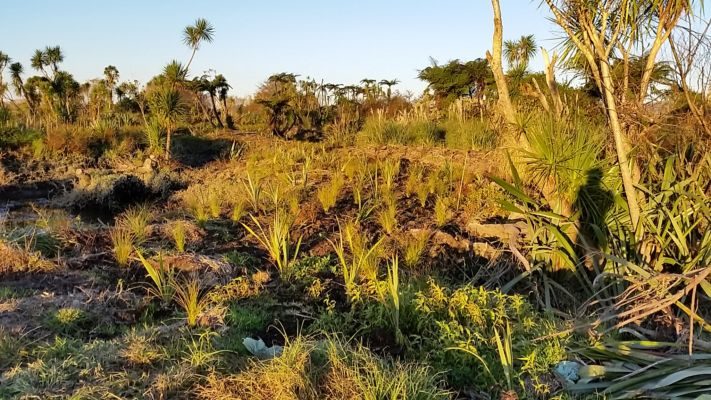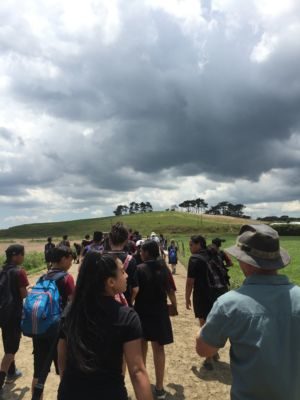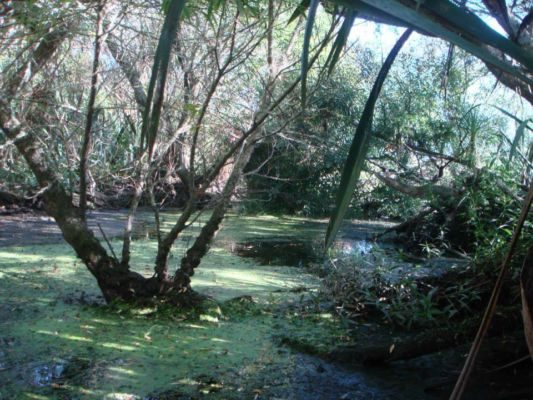Stu Muir is a Waikato dairy farmer and, in contrast to some of the headline-grabbing stories you may have read about dairy farmers, Stu and his family are putting a huge effort into restoring natural waterways on their block.

Such is the magnitude of their effort and the success of their project, that they even featured on the 50th Anniversary episode of ‘Country Calendar’.
Stu’s family have been farming in New Zealand since the 1850s. On a block of land his great great grandparents bought back in the 1890s, there is a swamp and until recently that swamp was clogged with willows and pampas – so badly blocked that you couldn’t move through the stream. Water couldn’t move either and with no current flowing through the wetland was full of pondweed and dead or dying throughout.

“It was a stagnant cesspool,” says Stu, “no flow at all, just tidal in and out.”
The stream that ought to be flowing through the wetland was a stagnant tributary of the Waikato River, blocked since some time back in the 1920s when the Awapuni Dam released silt that blocked all the natural streams. Then 5 or 6 years ago, Stu brought in the heavy machinery.
“First we aerially sprayed the willows,” says Stu, “then when they died back we used a chainsaw and digger to remove them.”
The current blew out the silt and opened the waterways again. With water flowing properly for the first time in perhaps a century, Stu set about creating 20 whitebait spawning ponds with grasses, flaxes, kahikatia,kowhai, mahoe and other wetland trees. With the help of a grant from the Waikato River Authority (a joint Iwi and crown organisation set up to clean up the Waikato river and its tributaries), he planted around 40,000 plants in the wetlands, along with another 8,500 plants at a fenced off sand dune lake on another family property.
He also started doing pest control over a 400 ha area. A huge number of volunteer hours were involved.
“I had to employ another full-time person on the farm so that I could do it,” admits Stu.
Rats and possums are targeted with baits while Stu uses DOC 200 traps for stoats and ferrets.
“We’ve trapped about 200 stoats, ferrets and weasels so far,” says Stu, “plus all the by-kill from stoats eating poisoned rats. Pest control is a major component of the restoration.”
Stu changes the bait over the duck-shooting season though, so that he doesn’t end up accidentally poisoning dogs. Good relations with the wider community are an important aspect of the project and everything has been done in consultation with his neighbours.
“The family land borders Fish & Game, DOC and Maori land. I’m doing my own thing, but with their approval and backing,” he explains.

On the home farm there are now kereru, tuis and the occasional Kaka and Kotuku..
“There were never tuis at the swamp,” says Stu, “But now they’re back in big numbers. They’re even roosting down there.”
Intrigued by the sight of tuis roosting in the wetlands, Stu asked the guys at DOC about it. It meant, they told him, that the tuis were feeling secure. They weren’t getting molested at night by rats and possums – a visible endorsement of his trapping efforts.
Bitterns are also living in the wetland – and were there, even before the restoration. Numbers seem about the same, at the moment, Stu reckons, but he’s hoping the restoration will lead to greater bittern and fernbird numbers in the longterm.
“In the whitebait season the bitterns boom everywhere. We’re used to it, but scientists are amazed.”
In the next few months Stu will be building about $20,000 worth of boardwalks through the wetlands, so that he can extend the educational role of the wetland – and hopefully narrow the urban/rural divide – by hosting visits by local school groups. But he won’t be building the boardwalks on his own.
“A number of ‘at risk’ youth from the Educational Trust will be helping,” says Stu. “If they do the work, they can go catch some whitebait afterwards.”
Longterm plans include a bridge which is also needed to make the wetland more accessible to visiting groups. Stu’s set up a ‘Give-a-little’ page to help fund that project.
Additional funding for wetland projects comes from ‘Te Papa Eco Cottage’ – an off-grid luxury bed & breakfast cottage on the farm, set above the wetland with awesome evening views. There’s even an outdoor bath! Stu puts 15% of all ‘Te Papa Eco Cottage’ profits towards the wetland restoration.
One day the wetland will be put under covenant.
“That’s the longterm goal,” says Stu, “once the wetland is maintaining itself and the job is done.”

